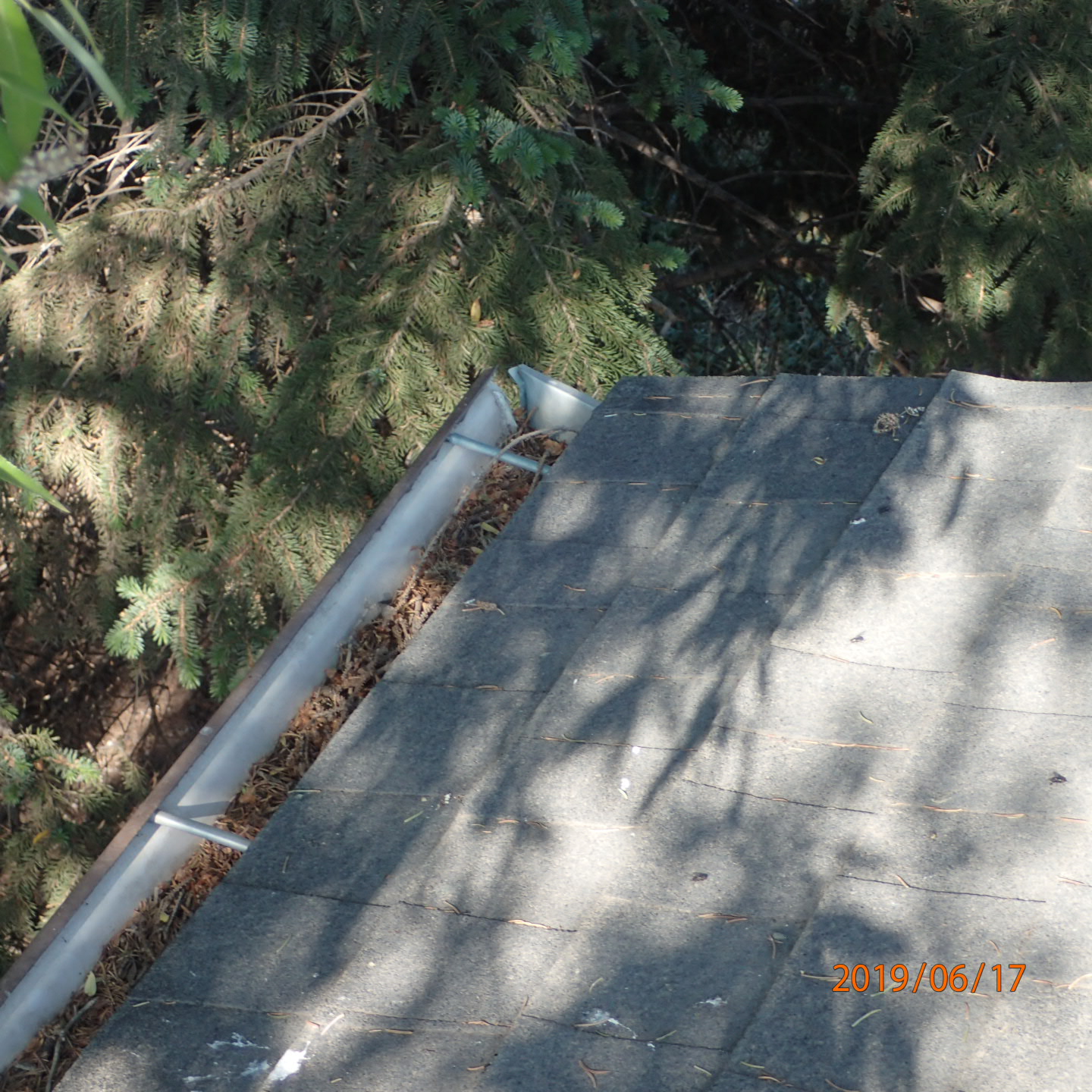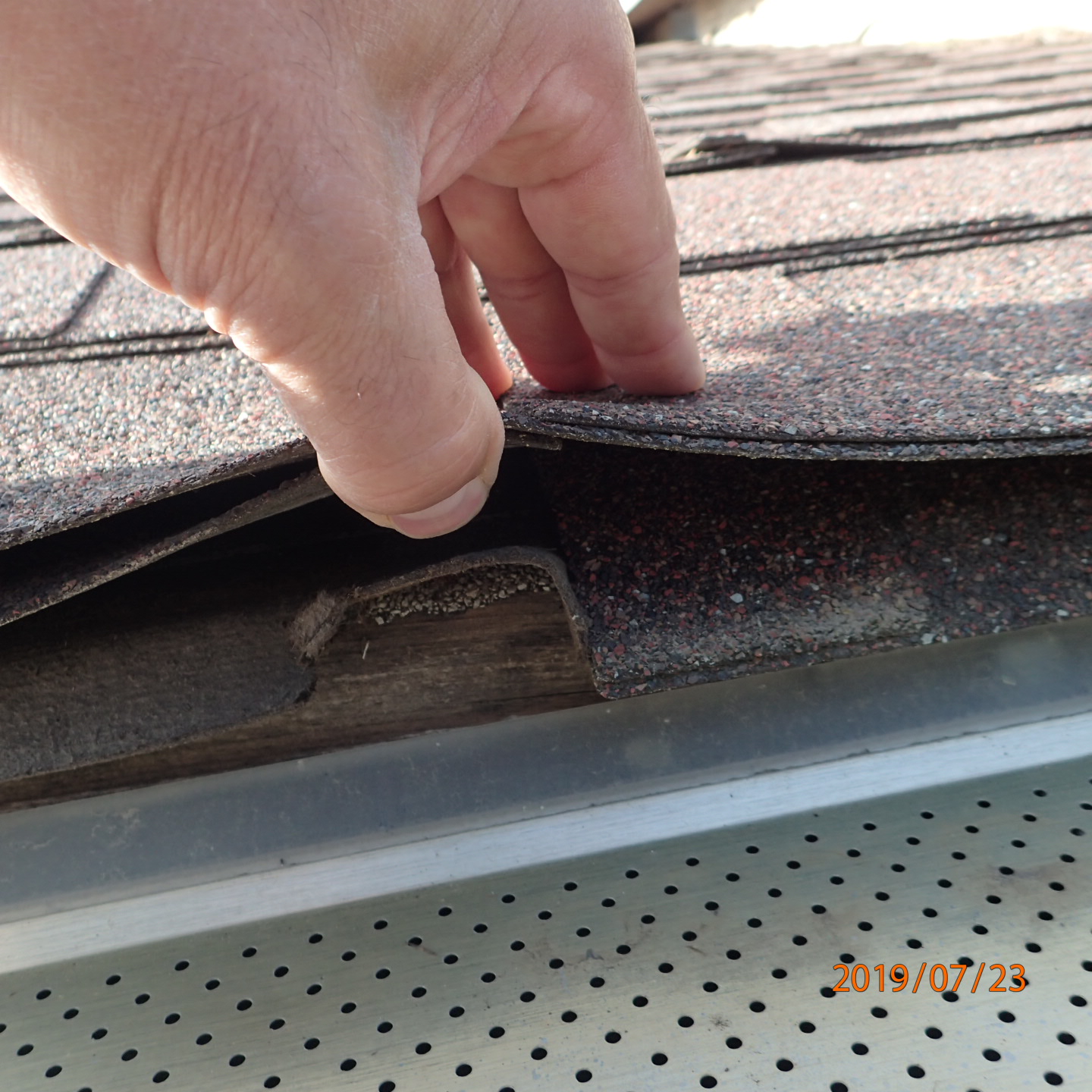

Another Reason to Walk the Roof
The importance of walking the roof is the ability to see the roof edge, the gutters, the underlayment and the ability to observe the singles from closeup. If the roof edge trim is missing there may be wind-driven moisture soaking into the wood substrate, causing wood rot and mould issues. Many time rain-driven moisture wicks two feet up the sheathing and may even affect the structural trusses and walls. It may also allow moisture to penetrate between the fascia’s wood base and aluminium finish causing the wood to rot out or allows the rain or snow water to drip between the fascia and gutter causing a potential winter trip hazard on the frozen sidewalks below.
The interior of the gutters should be observed to determine that they are clear of debris, if they a rusting and to observe the connections for leak related issues.
Another roof edge related issue is roofing underlayment. Not always easy to determine but in most cases, the bottom row of shingles can be lifted enough to determine if it has been installed. Roofing underlayment provides your roof with an extra layer of protection providing it’s the right material. I have come across plastic being installed in place of roofing felt. This will cause moisture to collect and increases rot and mould activity.
It's also important to be on the roof to determine if the shingles are installed properly, are they adhering properly to prevent wind lift, are they lapped proper, are there exposed nails, under-driven or over-driven nails, Are the valleys sealed properly.
All the issues discussed can not be observed unless, at the very least, the inspector climbs the ladder and if safe to do so, walks the roof.